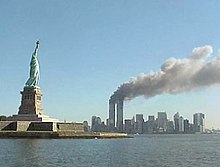- http://www.bbc.co.uk/news/world-europe-11804398
- http://www.bbc.co.uk/news/world-europe-11804943
- http://www.bbc.co.uk/news/world-europe-11806040
- http://www.bbc.co.uk/news/world-europe-11821422
- http://www.bbc.co.uk/news/education-11829102
- http://www.bbc.co.uk/news/education-11828882
- http://www.bbc.co.uk/news/business-11829811
WASHINGTON (AP) - Federal health regulators are weighing restrictions on Robitussin, NyQuil and other cough suppressants to curb cases of abuse that send thousands of people to the hospital each year.
The Food and Drug Administration on Tuesday posted its review of dextromethorphan, an ingredient found in more than 100 over-the-counter medications that is sometimes abused for its euphoric effects. The practice, dubbed "robotripping," involves taking more than 25 times the recommended dose of a cold medicine and is mainly associated with teenagers.
At high doses the drug causes increased blood pressure, heart rate and fever. Abusers can also suffer side effects from other ingredients mixed in cough medicines, such as acetaminophen, which can cause liver damage.
"Because of the drug's perceived safety, ease of availability, and desired psychoactive effects, it is sought after by those seeking to alter their mental state," states the FDA review.
According to the FDA, inappropriate use of the ingredient was linked to nearly 8,000 emergency room visits in 2008. That was up more than 70 percent from reports in 2004.
An FDA analysis concluded that dextromethorphan is abused less often than the popular painkiller codeine but more often than pseudophedrine, a cold medicine ingredient that can be processed into methamphetamine.
The FDA has agreed to reconsider how it regulates the drug at the behest of the Drug Enforcement Agency, which has raised concerns about increasing abuse among adolescents.
On Sept. 14, the FDA will ask a panel of outside experts whether dextromethorphan should be available only as a prescription. The agency is not required to follow the group's advice, though it often does.
Mandating a prescription for the drug would deal a major blow to over-the-counter drug makers, which use the drug in dozens of combination cold medicines. Popular brands containing dextromethorphan include Wyeth's Dimetapp, Bayer's Alka Seltzer Flu Plus and Procter & Gamble's Vicks cough medicines. The drug is available in pills, gel caps, liquids and other forms.
Most industry observers don't expect the FDA to mandate a prescription on those products due to the enormous workload it would create for doctors and pharmacists.
One alternative could involve placing the drugs behind the counter, though the FDA's review did not discuss specific proposals.
The over-the-counter medicine industry supports prohibiting sales of the medicines to people under age 18. Such age restrictions require legal changes, and the industry's trade association has lobbied on the issue at the state and federal levels.
A spokeswoman for the Consumer Healthcare Products Association said the group has been working since 2003 to reduce abuse through educational campaigns targeting parents, teenagers and school nurses.
"It's really about trying to take this multifaceted approach to inform parents that while these medicines are safe and effective, they are also vulnerable to abuse," said spokeswoman Elizabeth Funderburk. The group represents Pfizer, Johnson & Johnson and most other over-the-counter drug companies.
Date: August 31, 2010
Source: Associated Press


